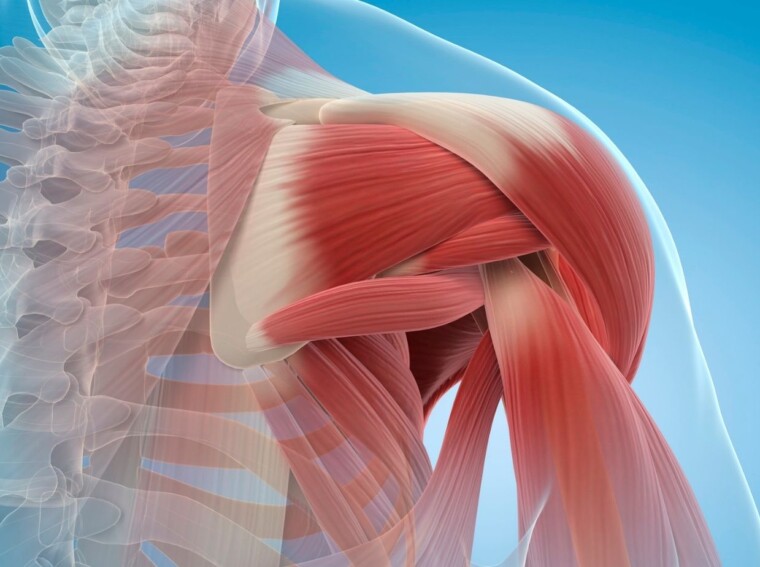Which Term Means The Rupture Of A Muscle
When it comes to the medical terminology surrounding muscle injuries, one specific term stands out: “muscle rupture.” This term refers to the tearing or breaking of a muscle due to excessive strain or trauma. It is commonly used in the field of sports medicine and orthopedics to describe a severe form of muscle injury.
The concept of muscle rupture encompasses different degrees of severity, ranging from partial tears where only a portion of the muscle fibers are affected, to complete ruptures where the entire muscle is torn apart. The exact terminology used may vary depending on the context and location of the injury. For example, in some cases, you might hear terms like “torn muscle” or “muscle tear” being used interchangeably with “muscle rupture.”
Muscle ruptures can occur as a result of sudden movements, overexertion, direct impact, or underlying conditions that weaken the muscles. Common sites for these injuries include the hamstrings, quadriceps, calf muscles, and rotator cuff in the shoulder. Prompt diagnosis and appropriate treatment are essential for successful recovery and restoration of normal function.
So when discussing muscle injuries, remember that “muscle rupture” is the term that specifically denotes the tearing or breaking of a muscle due to strain or trauma. Understanding this terminology can help you better navigate conversations about these types of injuries and their management.
Common Causes Of Muscle Ruptures
Muscle ruptures, also known as muscle tears, can occur due to various factors. Understanding the common causes behind these injuries can help individuals take preventive measures and make informed decisions regarding their physical activities. Let’s explore some of the typical reasons why muscles may experience a rupture:
- Sudden Impact or Trauma: One common cause of muscle ruptures is a sudden impact or trauma to the affected area. This could be a result of accidents, falls, or direct blows during sports activities. Such abrupt force can exceed the muscle’s capacity to withstand pressure, leading to a tear.
- Overexertion and Fatigue: Pushing your muscles beyond their limits without adequate rest and recovery time can significantly increase the risk of muscle ruptures. Overexertion and fatigue weaken the muscles’ structural integrity, making them more susceptible to tearing.
- Improper Warm-up and Stretching: Failing to warm up properly before engaging in rigorous physical activities can put undue stress on your muscles, increasing the likelihood of a rupture. Insufficient stretching exercises before workouts may also contribute to this vulnerability.
- Poor Conditioning and Weak Muscles: Weakness in certain muscle groups due to poor conditioning or lack of regular exercise increases the chances of experiencing a muscle rupture when subjected to intense strain or sudden movements.
- Age-related Factors: As we age, our muscles gradually lose strength and flexibility, making them more prone to injuries such as ruptures. Aging-related degeneration processes may weaken tissues over time, further increasing susceptibility.
Remember that while these are some typical causes of muscle ruptures, each case is unique and influenced by individual factors such as overall health condition, genetics, and lifestyle choices.

Treatment Options For Muscle Ruptures
When it comes to the rupture of a muscle, prompt and appropriate treatment is crucial for a successful recovery. There are several options available that aim to relieve pain, promote healing, and restore functionality. Let’s explore some of these treatment options:
- Rest and Immobilization: One of the initial steps in treating a muscle rupture is to allow the affected area to rest and immobilize it. This helps prevent further damage and allows the body to begin its natural healing process. Depending on the severity of the rupture, this may involve using crutches, slings, or splints.
- Physical Therapy: Once the initial acute phase has passed, physical therapy can play a vital role in rehabilitating a muscle rupture. A qualified therapist will design an exercise program tailored to your specific needs and goals. These exercises focus on strengthening the surrounding muscles, improving flexibility, and gradually reintroducing functional movements.
- Medications: In some cases, medications may be prescribed to manage pain and inflammation associated with muscle ruptures. Nonsteroidal anti-inflammatory drugs (NSAIDs) like ibuprofen or naproxen sodium can help reduce swelling and discomfort during the healing process.
- Interventional Procedures: In more severe cases where conservative measures are insufficient, interventional procedures may be considered as part of the treatment plan. These procedures include corticosteroid injections or ultrasound-guided needle treatments aimed at reducing inflammation and promoting tissue repair.
- Surgery: In certain instances where there is significant muscle damage or complete ruptures that do not respond well to conservative treatments, surgical intervention may be necessary. The goal of surgery is to repair torn muscle fibers through suturing techniques or reattachment procedures.
It’s important to note that each case of muscle rupture is unique, so treatment plans should always be tailored according to individual circumstances under professional medical guidance.
Remember that seeking early medical attention plays a crucial role in the successful management of muscle ruptures. Proper treatment, combined with patience and adherence to a rehabilitation program, can help individuals regain strength and resume their daily activities effectively.

